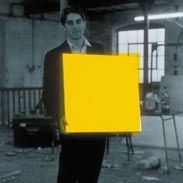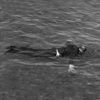
(Previously) The suicide is a recurrent topic of contemporary art. Unfortunately, the reverse is true.
Following the morbid success of Goethe’s The sorrows of young Werther, the archetypal romantic artist considered the suicide as a possible, worthy and ambitious end. The baudelarian ethers attracted the youth trapped between an industrialized and frenzied rationalism and a declining religion. The solution of the deliberate death allowed the artist to remain master of his destiny and to avoid the personal decay and the corruption of a rejected society. The myth of the damned artist continued and let dead bodies everywhere: Vincent Van Gogh (shotgun), Ernst Ludwig Kirchner (Nazi persecution), Arshile Gorky (hanging), Nicolas de Staël (defenestration)…
What about nowadays? Is the artist still a “suicide by society”? We are not going to do a simple and sinister obituary, or question the motivations that push him to “be blue”. We are more likely to question the possibility to reread this extreme acting out of a central character concerning the interpretation and his mirror position he plays in our society.
During last months, three artists have proved that the romantic myth of the damned artist is still “alive”. Angus Fairhurst, hanged up to a tree (an odinist gesture?) was one of the Young British Artists, not the most famous, but certainly of one the most relevant. He lets behind him a protean work, humoristic and intensively reflexive. Jeremy Blake (who did the cover of Beck’s Sea change album) killed himself after finding his girlfriend’s dead body, the film director Theresa Ducan, who died by her own hand too. We can hardly imagine more specifically romantic or shakespearian end…. More recently, the disappearance of Edouard Levé left a bad taste. Few days after having given the manuscript of his last book titled Suicide to his editor, he killed himself. His fictional photographs series are full of a totally frightening everyday nature. Of course, it’s tantalizing to reread the pieces of these artists according to their tragic end : Angoisse by Levé, Pietà by Fairhurst, Angel Dust by Blake. These latteacrr point to the fatal aspiration of their authors. An adequacy between the life and the work that reminds Proust vs. Sainte-Beuve. It’s probably dangerous to try to rewrite history, to psychologically analyze the works. Though, as Sartre said, we can think that the artistic act is completely engaging, a trace of the artist is certainly present at the surface of the creation. But it’s a trail, not a self-portrait.
A comparison to the rock universe can be interesting. The greatest rock stars who killed themselves benefit from a specific aura and a repositioning of their work into music history: Jim Morrison (if we accept overdose as a suicide) and Kurt Cobain are now idolized icons, Ian Curtis and Elliot Smith exit from their confidentiality and underground respect. Death gives to dead bodies the recognition of a free author, extreme, defying god, dissenter. A dangerous vision for the “followers” but that is restricted to fans of rock stars, not artists. Art collectors do not imitate and kill themselves… they rub their hand in glee.
That’s true, happily or not, like the accident leads the driver to slow down and watch the spectacle, the suicide highlights the dead. It enables to (re)launch a carrier and no one can avoid a post-commercial appropriation of his death. Almost mechanically at the beginning because, the production ending, the pieces available rarefy. The typical case is the young dead Jean-Michel Basquiat, star of the blasted artist sales. The most amazing rediscovery has been Robert Malaval, exhibited pomp and circumstance at the Palais de Tokyo, Paris, in 2005. Actually, this sinister highlighting can benefit to a great and unfairly forgotten artist. That’s the case of Marc Psalidas, a great painter, using an aesthetic of primitive symbolism and who would be worthy of receiving the cold sun of recognition.
The suicide is an ultimate act that could almost be considered as an artistic gesture, an aesthetic testament. Ray Johnson’ death, a pioneer of English Pop Art, is perceived as an experimental “nothing”. Rothko explored the “colorfield painting” and colors’ limits with his own sacrificial blood. Rudolf Schwarzkogler reached a mythical status thanks to his legendary (and fake) suicide by self-castration, vestige of a performance (Action 3). A grand gesture that marks history.
It remains the mysterious suicides: Pollock who destroys himself in a car, Ana Mendieta, Carl Andre’s girlfriend, who is glued between murder and deliberate death, art which regularly dies, murdered by itself. No panic, considering this latter, it’s fake: not a hanging, a bungee jump…
[Picture : Jeremy Blake, Sodium Fox, 2005. Sequence from DVD with sound. 14 minute continuous loop. Courtesy Feigen Contemporary & J. Blake]




 Suicidal Tendencies. Is suicide trendy? Really? Or, in our general crisis times, the tendency to be suicidal is growing up?
Suicidal Tendencies. Is suicide trendy? Really? Or, in our general crisis times, the tendency to be suicidal is growing up?






